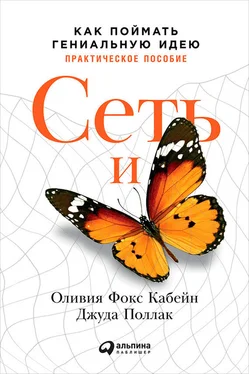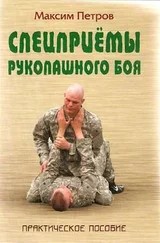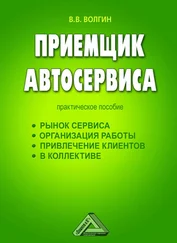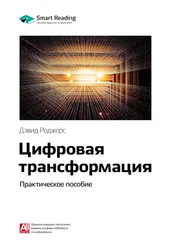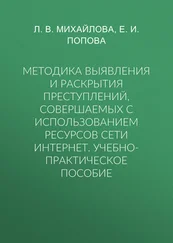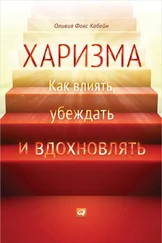Frédéric Gougoux, Robert J. Zatorre, Maryse Lassonde, Patrice Voss, and Franco Lepore, «A Functional Neuroimaging Study of Sound Localization: Visual Cortex Activity Predicts Performance in Early-Blind Individuals», PLoS Biology 3, no. 2 (2005): e27.
Weihenmayer, Touch the Top of the World.
Bogdan Draganski, Christian Gaser, Volker Busch, Gerhard Schuierer, Ulrich Bogdahn, and Arne May, «Neuroplasticity: Changes in Grey Matter Induced by Training», Nature 427, no. 6972 (2004): 311–12; Arne May, Gören Hajak, S. Gänssbauer, Thomas Steffens, Berthold Langguth, Tobias Kleinjung, and Peter Eichhammer, «Structural Brain Alterations Following 5 Days of Intervention: Dynamic Aspects of Neuroplasticity», Cerebral Cortex 17, no. 1 (2007): 205–10.
Беседы с д-ром Джоном Лиффом, январь — март 2015 года.
Беседы с Астро Теллером, май 2015 года.
Jeffrey A. Kleim and Theresa A. Jones, «Principles of Experience-Dependent Neural Plasticity: Implications for Rehabilitation After Brain Damage», Journal of Speech, Language, and Hearing Research 51, no. 1 (2008): S225–39.
Cyrus K. Foroughi, Samuel S. Monfort, Martin Paczynski, Patrick E. McKnight, and P. M. Greenwood, «Placebo Effects in Cognitive Training», Proceedings of the National Academy of Sciences 113, no. 27 (2016): 7470–74; Lucinda S. Spaulding, Mark P. Mostert, and Andrea P. Beam, «Is Brain Gym® an Effective Educational Intervention?», Exceptionality 18, no. 1 (2010): 18–30; Jennifer Stephenson, «Best Practice? Advice Provided to Teachers About the Use of Brain Gym® in Australian Schools», Australian Journal of Education 53, no. 2 (2009): 109–24.
Sharon Eldar and Y. Bar-Haim, «Neural Plasticity in Response to Attention Training in Anxiety», Psychological Medicine 40, no. 04 (2010): 667–77.
Leo Babauta, Focus: A Simplicity Manifesto in the Age of Distraction (Grand Haven, Mich.: Brilliance Audio, 2011).
Все последующие ссылки на работу д-ра Келли Макгонигал: Kelly McGonigal, PhD, The Willpower Instinct (New York: Avery, 2012): 42.
Susan Burton, «Terry Gross and the Art of Opening Up», The New York Times, October 21, 2015.
Aymeric Guillot, Kevin Moschberger, and Christian Collet, «Coupling Movement with Imagery as a New Perspective for Motor Imagery Practice», Behavioral and Brain Functions 9, no. 1 (2013): 1.
Адаптировано из классической книги Итало Кальвино «Невидимые города», в которой Марко Поло развлекает Кублай-хана историями о разных волшебных городах в землях Хана, которые он посетил. Italo Calvino, Invisible Cities (New York: Harcourt Brace, 1978).
«Bicycle History from the Late 19th Century», America on the Move Exhibit, National Museum of American History, Smithsonian Institution, amhistory.si.edu/onthemove/themes/story_69_3.html.
Jon Gertner, The Idea Factory: Bell Labs and the Great Age of American Innovation (New York: Penguin, 2012).
Dennis Overbye, Einstein in Love: A Scientific Romance (New York: Penguin, 2001).
Личная беседа с Надей Дирековой.
EarthSky editors, «Sunni Robertson on How a Kingfisher Inspired a Bullet Train», EarthSky, June 29, 2012.
Abigail Doan, «BioMimetic Architecture: Green Building in Zimbabwe Modeled After Termite Mounds», Inhabitat, November 29, 2012.
Janine M. Benyus, Biomimicry: Innovation Inspired by Nature (New York: William Morrow, 2002).
Беседы с Сэнди Пентлендом, октябрь 2014 года.
Stacey Anderson, «When Keith Richards Wrote ’(I Can’t Get No) Satisfaction’ in His Sleep», Rolling Stone, May 9, 2011, www.rollingstone.com/music/news/when-keith-richards-wrote-i-cant-get-no-satisfaction-in-his-sleep-20110509.
Беседы с Томом Чи, март 2014 года.
Интересно отметить, что люди с сильной склонностью к катострофизации говорят о более сильной боли и даже могут отличаться по физической нейроанатомии. См.: Claudia M. Campbell, Kenny Witmer, Mpepera Simango, Alene Carteret, Marco L. Loggia, James N. Campbell, Jennifer A. Haythornthwaite, and Robert R. Edwards, «Catastrophizing Delays the Analgesic Effect of Distraction», PAIN® 149, no. 2 (2010): 202–7. Новые отчеты по исследованиям: «Наши данные свидетельствуют о том, что носители гена NPSR1 с T-аллелью склонны придавать чрезмерное значение своей условно-рефлекторной реакции страха по сравнению с теми, у кого Т-аллель отсутствует». См.: Karolina A. Raczka, Nina Gartmann, Marie-Luise Mechias, Andreas Reif, Christian Büchel, Jürgen Deckert, and Raffael Kalisch, «A Neuropeptide S Receptor Variant Associated with Overinterpretation of Fear Reactions: A Potential Neurogenetic Basis for Catastrophizing», Molecular Psychiatry 15, no. 11 (2010): 1067–74.
Rick Hanson, PhD, «Do Positive Experiences Stick to Your Ribs?», Take in the Good, June 1, 2015, www.rickhanson.net/take-in-the-good.
Личная переписка с Адамом Берманом, 2010–2012 годы.
Более точно: определенные участки нашего мозга используются как в реальном опыте, так и в воображении, и это экономичное использование мозга имеет побочный эффект в виде возникновения эмоций реального переживания.
Этот эффект настолько силен, что, как известно спортсменам, можно нарастить мышечную массу с помощью воображения. Erin M. Shackell, Lionel G. Standing, «Mind Over Matter: Mental Training Increases Physical Strength», North American Journal of Psychology 9, no. 1 (2007): 189–200.
Если хотите узнать об этом больше, мы с радостью можем порекомендовать вам работы Роберта Сапольски «Why Zebras Don’t Get Ulcers», в том числе его лекцию в iTunes.
Gretchen Cuda, «Just Breathe: Body Has a Built-in Stress Reliever», NPR, Morning Edition, December 6, 2010.
Личная переписка с доктором Филиппом Голдином, 2013 год.
Читать дальше
Конец ознакомительного отрывка
Купить книгу
